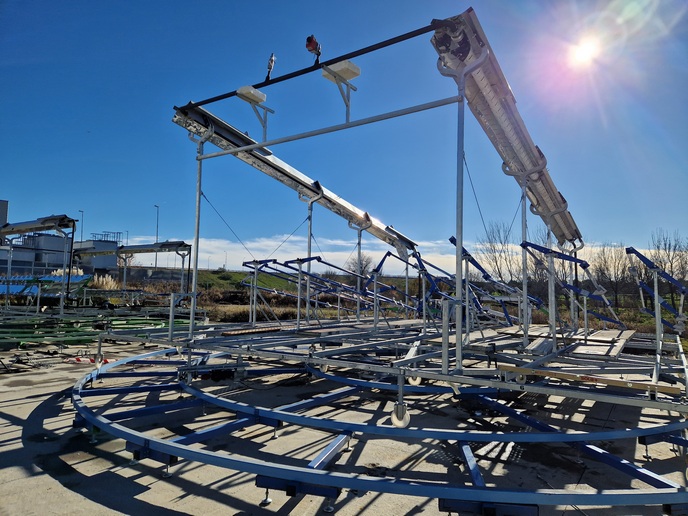Windows turn into heating and cooling systems
What if a window was more than just a sheet of glass that let sunlight in or let you enjoy the nice views outside? What if that same window was creating energy to heat and cool your office building? Thanks to the innovative concept for multifunctional solar thermal glass façade systems being developed by the EU-funded FLUIDGLASS project, such a system is on the horizon. “The FLUIDGLASS approach turns passive glass facades, such as windows, into active transparent solar collectors that can control the flow of energy throughout a building,” says Project Coordinator Anne-Sophie Zapf. Four functions in one The science behind FLUIDGLASS is that it combines four functions (solar thermal collector, heating/cooling device, transparent thermal envelope, adaptive shading system) into one integrated system. “We start by feeding the window a special circulating fluid that provides changing levels of shade depending on the season and time of day,” explains Zapf. “This fluid lets the outer face collect solar radiation and transform it into energy, which is then used by the inner face to cool or heat the room.” The fluid inside the glass is a mixture of water, anti-freeze and magnetic particles. To ensure the long-term stability of the system, researchers used particles with very precise features. “The particles cannot agglutinate, or clump together,” explains Zapf. “They also need to stay in the solution and not deposit on the window.” Furthermore, the fluid must be injected in a safe, homogeneous and efficient manner. According to Zapf, finding the right colouring of the liquid needed to get the right level of transparency turned out to be more difficult than expected. “Overcoming this required additional research efforts,” she says. “In the end, we were able to determine the right combination of particles, fluid and coating of the glass solution that we could then use in the testing phase.” Capable of heating and cooling Researchers began testing the FLUIDGLASS system using sophisticated computer models and, later, with a prototype. “We were able to test the FLUIDGLASS system for the first time in both cold and hot climates in Liechtenstein and Cyprus respectively,” says Zapf. “These tests allowed us to measure the system’s performance in laboratory conditions using a solar simulator at a level that has never been achieved before.” In ideal conditions, each FLUIDGLASS window was able to produce up to one kilowatt of energy per hour. “These tests confirmed that FLUIDGLASS is capable of providing all of a building’s heat and cooling needs, that no additional heating or cooling systems were required,” says Zapf. Zapf says that one highlight was standing inside the testing container and seeing the system running and working. “At this moment, we knew that it was possible to install all the parts of the FLUIDGLASS system,” she says. “This was confirmation of the hard work and collaboration of all the project partners, who came together to build a fully-functioning, sustainable heating and cooling system.” Project researchers are now analysing the test results and working to further perfect the colouring needed to ensure FLUIDGLASS’ position as a stable, long-term solution. The ultimate objective is to test the system in real operating conditions and, from there, move towards market readiness.
Keywords
FLUIDGLASS, solar radiation, green building, sustainable building, energy efficiency







